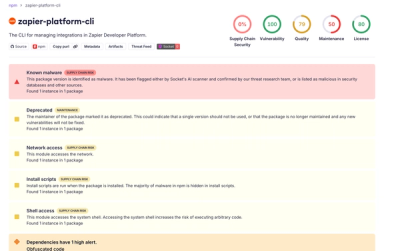RubyTree




__ _ _
/__\_ _| |__ _ _| |_ _ __ ___ ___
/ \// | | | '_ \| | | | __| '__/ _ \/ _ \
/ _ \ |_| | |_) | |_| | |_| | | __/ __/
\/ \_/\__,_|_.__/ \__, |\__|_| \___|\___|
|___/
DESCRIPTION:
RubyTree is a pure Ruby implementation of the generic
tree data structure. It provides a node-based model to
store named nodes in the tree, and provides simple APIs to access, modify and
traverse the structure.
The implementation is node-centric, where individual nodes in the tree are the
primary structural elements. All common tree-traversal methods (pre-order,
post-order, and breadth-first) are supported.
The library mixes in the Enumerable and Comparable modules to allow
access to the tree as a standard collection (iteration, comparison, etc.).
A Binary tree is also provided, which provides the in-order traversal in
addition to the other methods.
RubyTree supports importing from, and exporting to JSON, and also
supports the Ruby's standard object marshaling.
This is a BSD licensed open source project, and is hosted at
github.com/evolve75/RubyTree, and is available as a standard gem
from rubygems.org/gems/rubytree.
The home page for RubyTree is at rubytree.anupamsg.me.
WHAT'S NEW:
See History for the detailed Changelog.
See API-CHANGES for the detailed description of
API level changes.
GETTING STARTED:
This is a basic usage example of the library to create and manipulate a tree.
See the API documentation for more details.
#!/usr/bin/env ruby
require 'tree'
root_node = Tree::TreeNode.new("ROOT", "Root Content")
root_node.print_tree
root_node << Tree::TreeNode.new("CHILD1", "Child1 Content") << Tree::TreeNode.new("GRANDCHILD1", "GrandChild1 Content")
root_node << Tree::TreeNode.new("CHILD2", "Child2 Content")
root_node.print_tree
child1 = root_node["CHILD1"]
grand_child1 = root_node["CHILD1"]["GRANDCHILD1"]
siblings_of_child1 = child1.siblings
children_of_root = root_node.children
parent = child1.parent
root_node.each { |node| node.content.reverse }
root_node.remove!(child1)
This example can also be found at
examples/example_basic.rb.
REQUIREMENTS:
INSTALL:
To install the gem, run this command from a terminal/shell:
$ gem install rubytree
This should install the gem file for RubyTree. Note that you might need to
have super-user privileges (root/sudo) to successfully install the gem.
DOCUMENTATION:
The primary class RubyTree is Tree::TreeNode. See the class
documentation for an example of using the library.
If the ri documentation was generated during install, you can use this
command at the terminal to view the text mode ri documentation:
$ ri Tree::TreeNode
Documentation for the latest released version is available at:
rubytree.anupamsg.me/rdoc
Documentation for the latest git HEAD is available at:
rdoc.info/projects/evolve75/RubyTree
Note that the documentation is formatted using Yard.
DEVELOPERS:
This section is only for modifying RubyTree itself. It is not required for
using the library!
You can download the latest released source code as a tar or zip file, as
mentioned above in the installation section.
Alternatively, you can checkout the latest commit/revision from the Version
Control System. Note that RubyTree's primary SCM is git and is
hosted on github.com.
Using the git Repository
The git repository is available at github.com/evolve75/RubyTree.
For cloning the git repository, use one of the following commands:
$ git clone git://github.com/evolve75/RubyTree.git # using ssh
or
$ git clone https://github.com/evolve75/RubyTree.git # using https
Setting up the Development Environment
RubyTree uses Bundler to manage its dependencies. This allows for a
simplified dependency management, for both run-time as well as during build.
After checking out the source, run:
$ gem install bundler
$ bundle install
$ bundle exec rake test:all
$ bundle exec rake doc:yard
$ bundle exec rake gem:package
These steps will install any missing dependencies, run the tests/specs,
generate the documentation, and finally generate the gem file.
Note that the documentation uses Yard, which will be
downloaded and installed automatically by Bundler.
ACKNOWLEDGMENTS:
A big thanks to the following contributors for helping improve RubyTree:
- Dirk Breuer for contributing the JSON conversion code.
- Vincenzo Farruggia for contributing the (sub)tree cloning code.
- Eric Cline for the Rails JSON encoding fix.
- Darren Oakley for the tree merge methods.
- Youssef Rebahi-Gilbert for the code to check
duplicate node names in the tree (globally unique names).
- Paul de Courcel for adding the
postordered_each method.
- Jen Hamon for adding the
from_hash method.
- Evan Sharp for adding the
rename and
rename_child methods.
- Aidan Steele for performance improvements
to
is_root? and node_depth.
- Marco Ziccadi for adding the
path_as_string and
path_as_array methods.
- John Mortlock for significant modernization
of the library code and addition of Github
workflows.
- Hermann Mayer for adding support for
specialized tree nodes (sub-classes of
Tree::TreeNode).
- Jakub Pavlik for fixing the creation of
detached copies of unclonable objects such as
:symbol, true|false, etc.
- bghalami-rc for updating the guard clause
in the
from_hash method.
LICENSE:
RubyTree is licensed under the terms of the BSD license. See
LICENSE.md for details.






